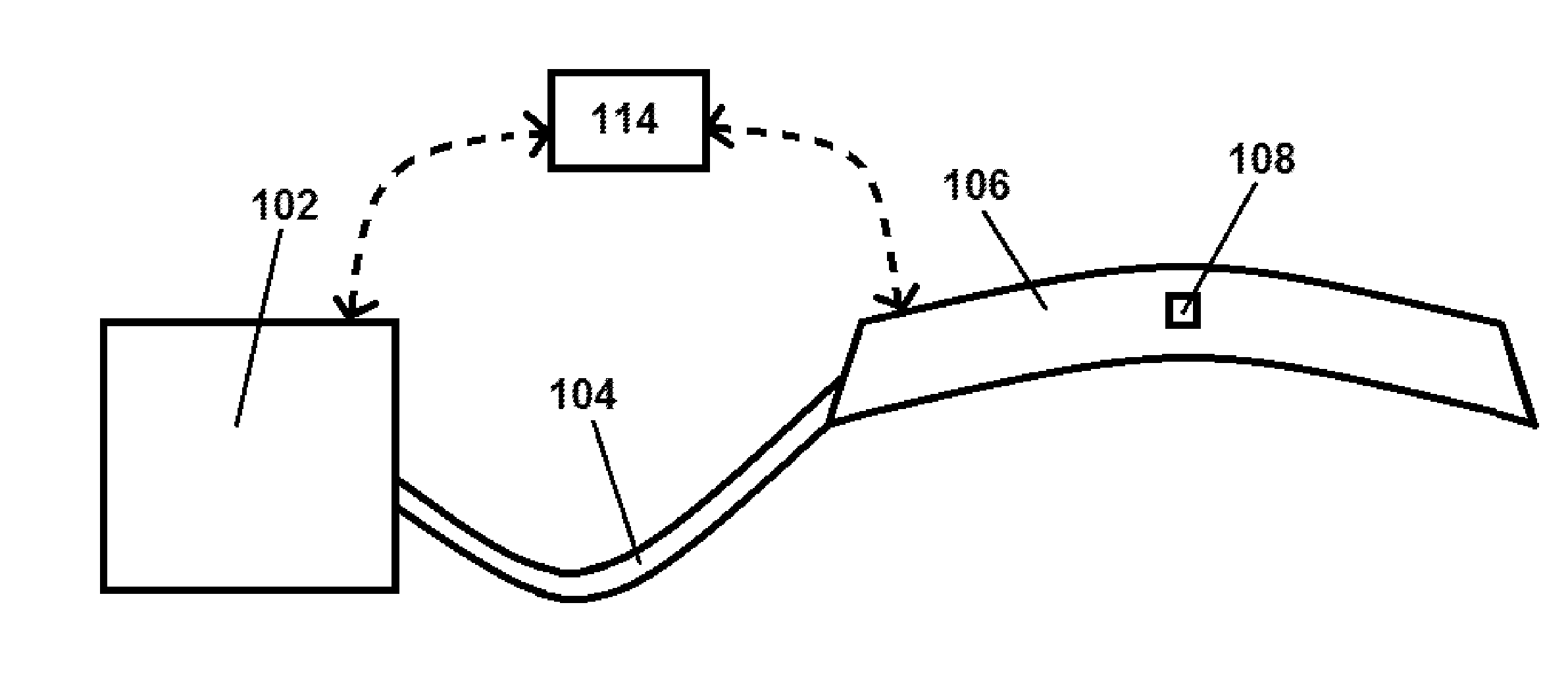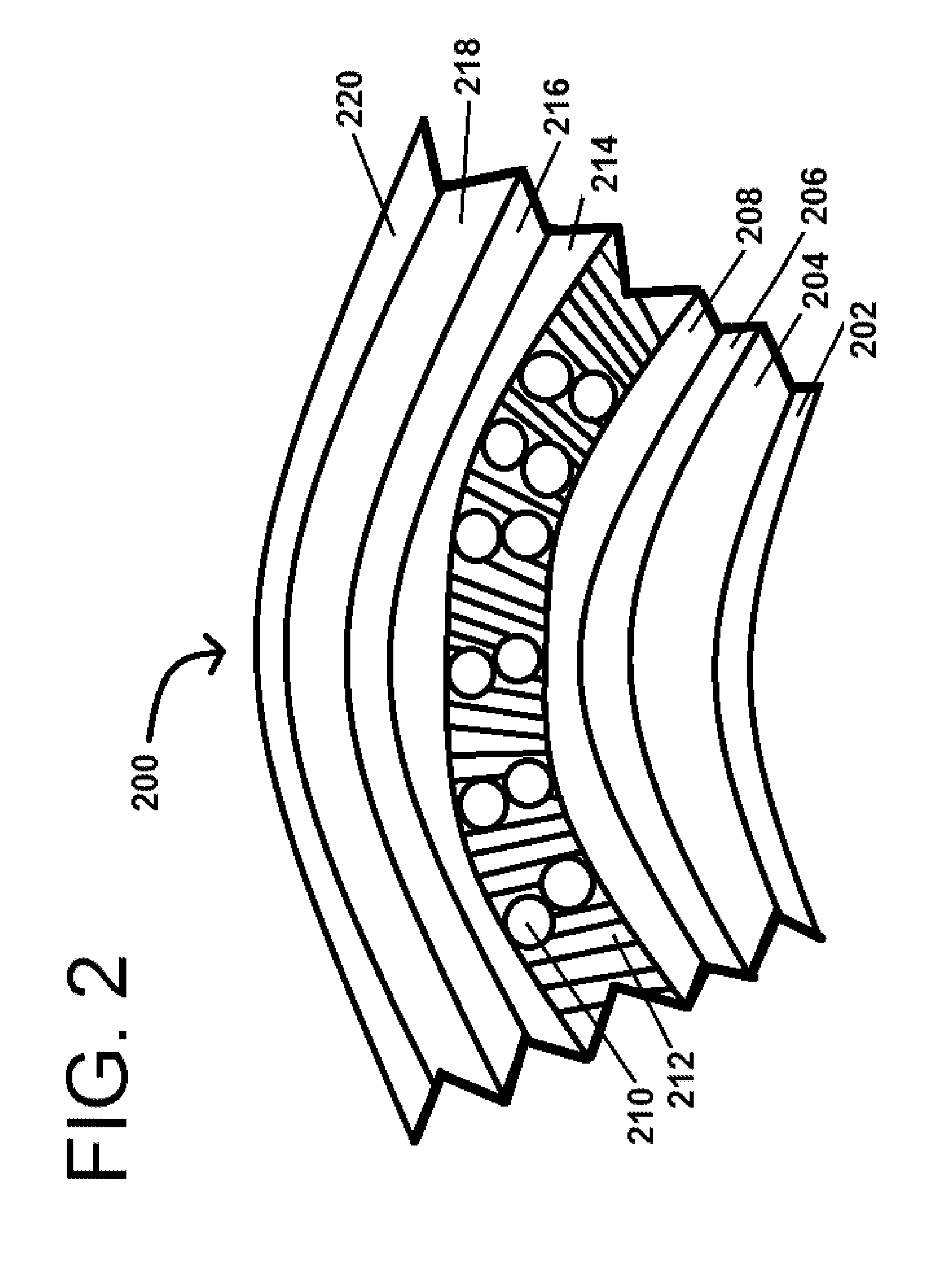Optical shutter dimming helmet visor
a technology of optical shutter and visor, which is applied in the field of optical shutter dimming helmet visor, can solve the problems of plastic material, difficult to ensure the constant distance of the optical shutter, and the difficulty of making the optical shutter work on a curved panel, etc., and achieves the effect of convenient transportation, low power consumption and better satisfying user preferences
- Summary
- Abstract
- Description
- Claims
- Application Information
AI Technical Summary
Benefits of technology
Problems solved by technology
Method used
Image
Examples
Embodiment Construction
[0025]Briefly and in general terms, the several embodiments of the present invention integrate optical shutter technology in a curved or flexible surface or panel. One preferred application for such technology is use as a visor in a helmet for motorcyclists.
[0026]The optical shutter may consist of only a single pixel or may include multiple pixels. In one embodiment, the physical dimensions of the optical shutter are 177.8 mm (length)×25.4 mm (width)×0.25 mm (thickness) or 7 inches (length)×1 inch (width)×0.0984 inches (thickness). The radius of curvature of the optical shutter may be between 80-160 mm, 90-150 mm, 100-140 mm, 110-130 mm, or 115-125 mm. In one embodiment, the radius of curvature is 121 mm. A suitable radius of curvature for the optical shutter depends on the bend radius of the helmet shield with which it will be used.
[0027]The optical shutter panel may initially be flat yet formed within a flexible material that permits it to be curved for affixing to a final object ...
PUM
| Property | Measurement | Unit |
|---|---|---|
| length | aaaaa | aaaaa |
| length | aaaaa | aaaaa |
| time | aaaaa | aaaaa |
Abstract
Description
Claims
Application Information
 Login to View More
Login to View More - R&D
- Intellectual Property
- Life Sciences
- Materials
- Tech Scout
- Unparalleled Data Quality
- Higher Quality Content
- 60% Fewer Hallucinations
Browse by: Latest US Patents, China's latest patents, Technical Efficacy Thesaurus, Application Domain, Technology Topic, Popular Technical Reports.
© 2025 PatSnap. All rights reserved.Legal|Privacy policy|Modern Slavery Act Transparency Statement|Sitemap|About US| Contact US: help@patsnap.com



